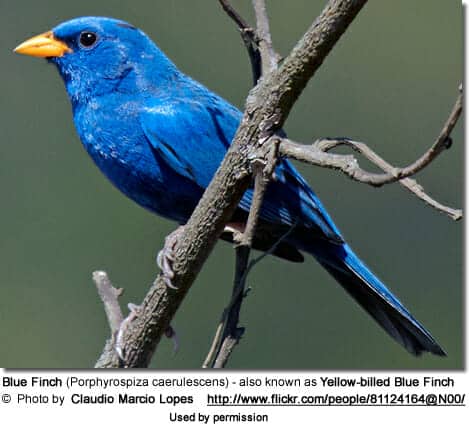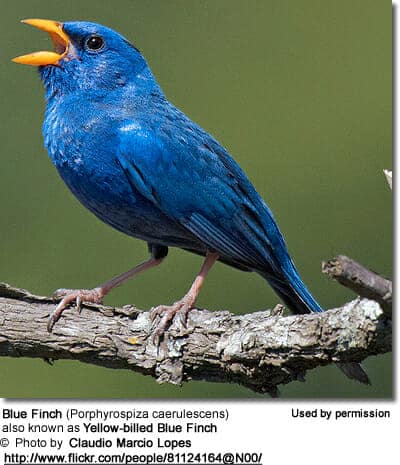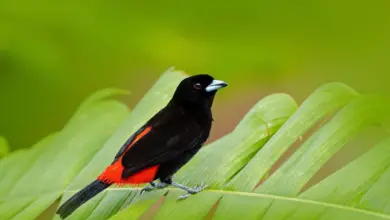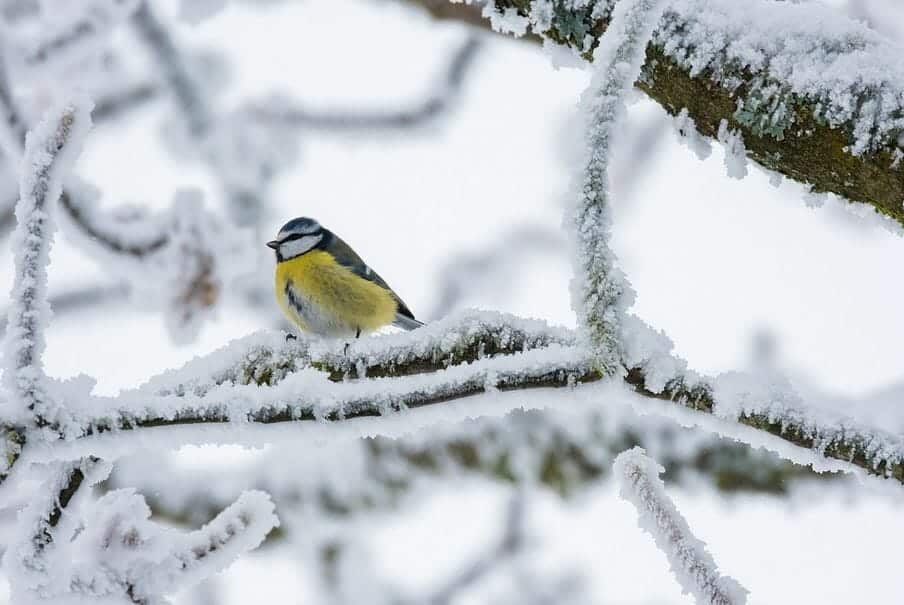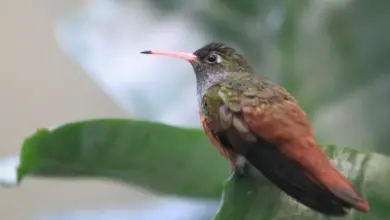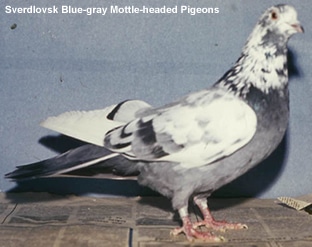The Yellow-billed Blue Finch (Porphyrospiza caerulescens) – also known as Yellow-billed Blue Finches – occur naturally in South America. Their numbers have greatly declined due to conversion of their cerrado habitat for agriculture, and this species is now listed as Near Threatened.
These birds are now rare and localized in Brazil. Greater numbers of them are still found in adjacent Bolivia where about 5,000 individuals are believed to be still in existence.
Based on molecular data (structure, bill shape, coloration and song), their closest relative are believed to be the Band-tailed Sierra Finches (Phrygilus alaudinus). This places them in the Tanager family (Thraupidae).
Depending on the source, they were previously grouped with the Cardinals (Cardinalidae), Buntings or even the American Sparrow family.
The Blue Finch is monotypic – the only member in the genus Porphyrospiza. In the future it is likely that the Blue Finch and the Band-tailed Sierra Finch will be combined in a new genus – probably Corydospiza.
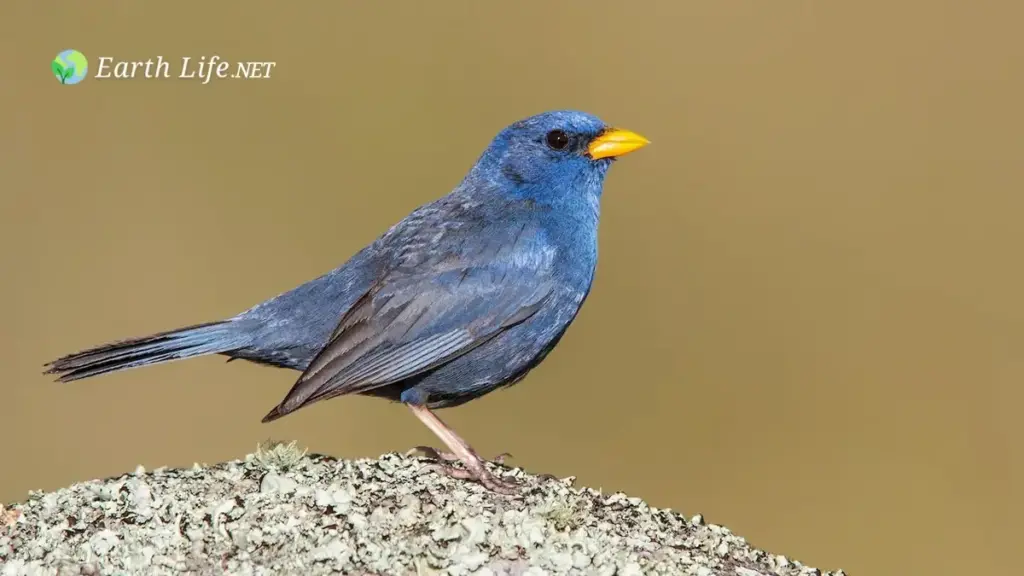
Distribution / Habitat
The Blue Finches are native to Brazil and Bolivia.
In Brazil, their range stretches from south-east Pará south to the central and southern parts of the state of Maranhão, Piauí, west Bahia, west and south to Tocantins, Districto Federal, Goiás, south Mato Grosso, south west and central Minas Gerais and São Paulo.
In Bolivia, they occur in eastern and southern parts – from east Beni south to southeastern areas of Santa Cruz, and probably also Chuquisaca (Ridgely and Tudor 1989, Sick 1993, Armonía 1995).
They inhabit grassy savanna, an ecoregion that is commonly referred to as Cerrado.
Description
Size
Blue Finches measure about 5″ or 12.5 cm in length (including the tail).
Plumage Details / Adults
Breeding males have a bright cobalt blue plumage. After the molt, the feathers are broadly edged rufous-brown.
Females have an upper plumage that is mostly rufous-brown. Below they are buffy white with dusky streaks.
Other Physical Details
The slender bill is bright yellow, with a blackish ridge in females. The legs are dull reddish.

Similar Species
Within their range, they can most reliably be identified by their yellow bills.
Diet / Feeding
Their diet includes seeds, insects and plant matter. They are usually seen foraging on the ground.
Calls / Vocalizations / Sounds
Their songs are usually heard during the morning and afternoon.
Alternate (Global) Names
Chinese: ??? … Czech: Papežík / prelátek kobaltový …Danish: Gulnæbbet Finke … Dutch: Kobaltgors … Finnish: Safiirikardinaali … French: Pape bleu du Brésil, Pape du Brésil, Porphyrin à bec jaune … German: Kobal-Ämmerling … Italian: Fringuello beccogiallo, Fringuello blu del Brasile … Japanese: aonojiko … Norwegian: Blåspurv … Polish: lazurka … Portuguese: azulinho-de-bico-de-ouro, campainha-azul, Campainha-do-sul … Russian: ??????? ?????????? ???????? … Slovak: modruška žltozobá … Spanish: Azulillo Brasileño, Yal Azul … Swedish: Blåfink

